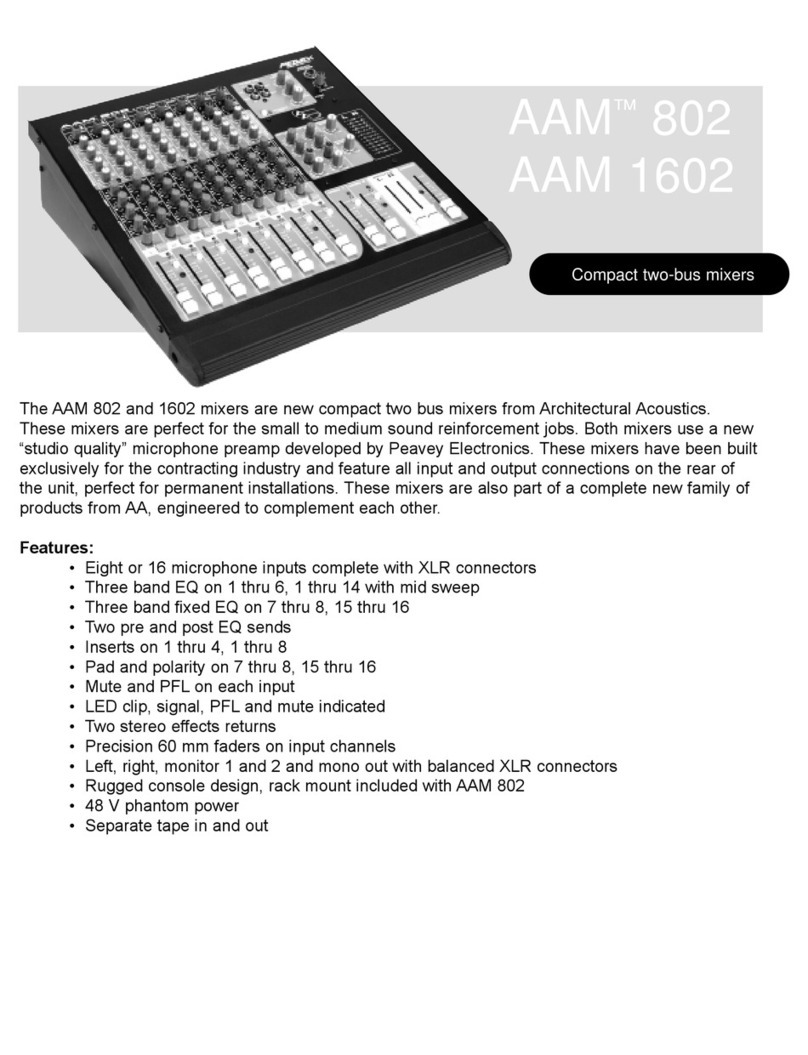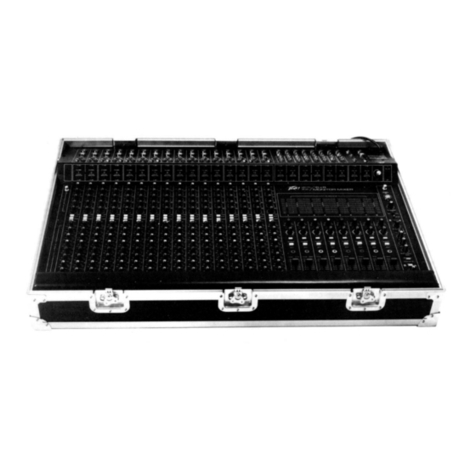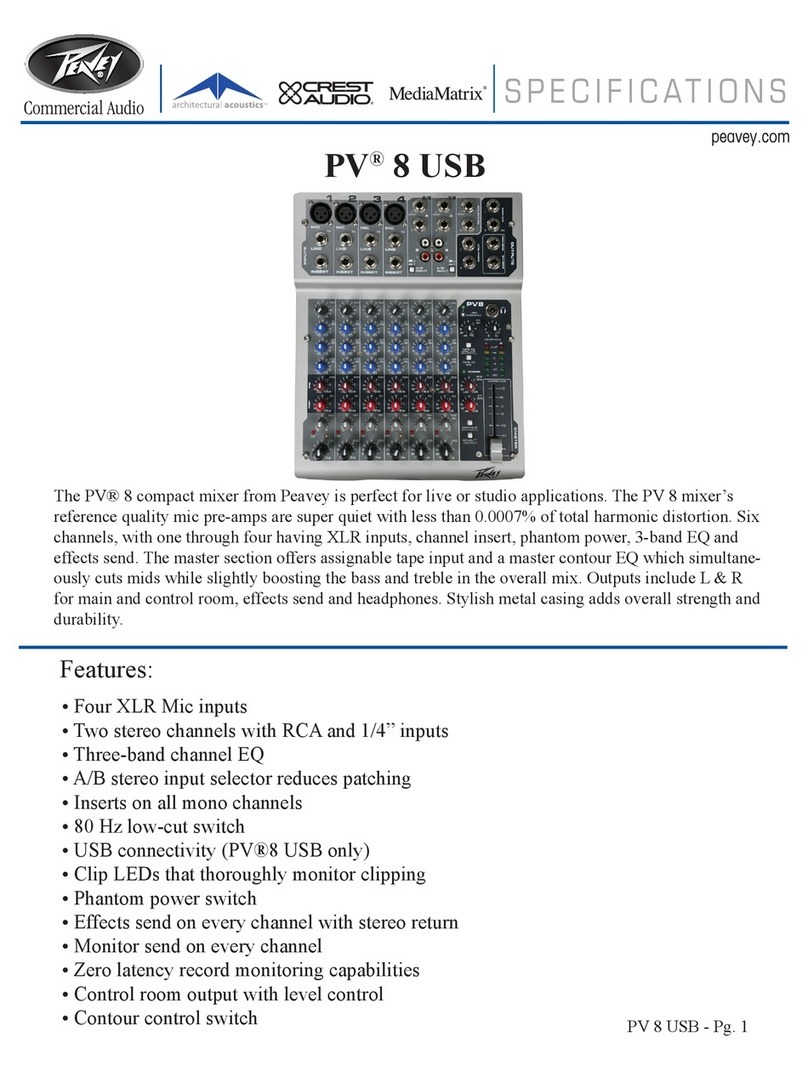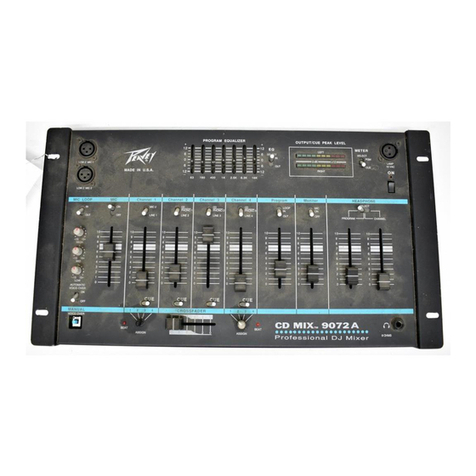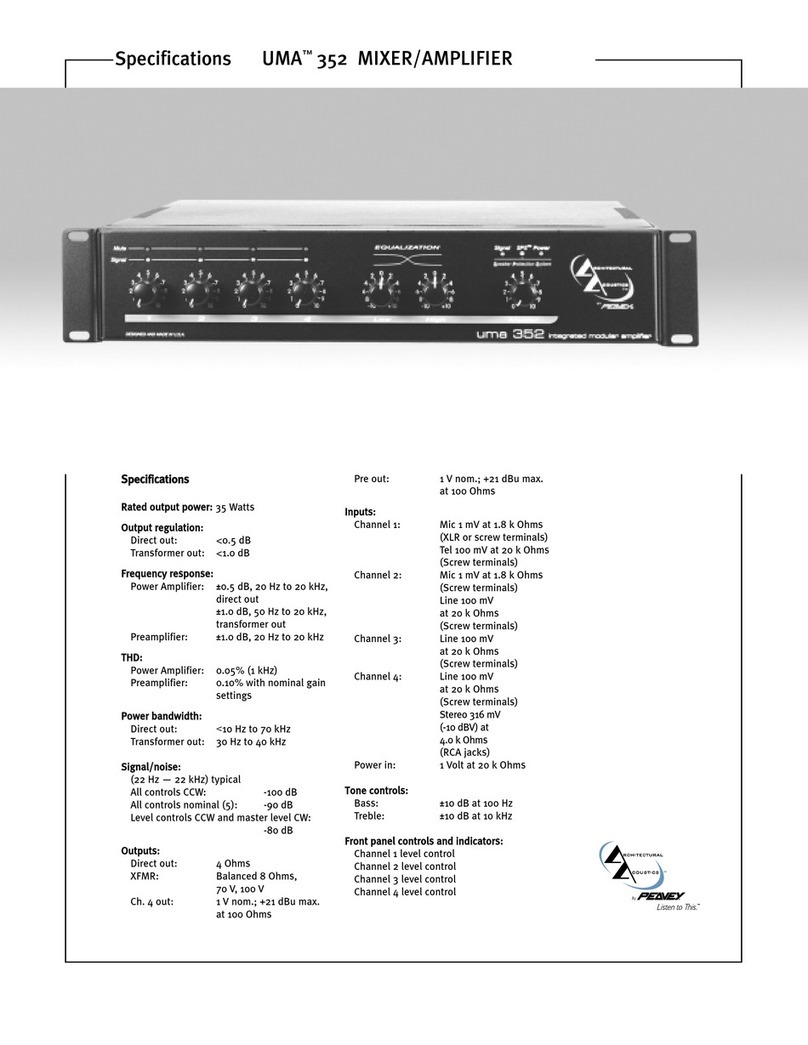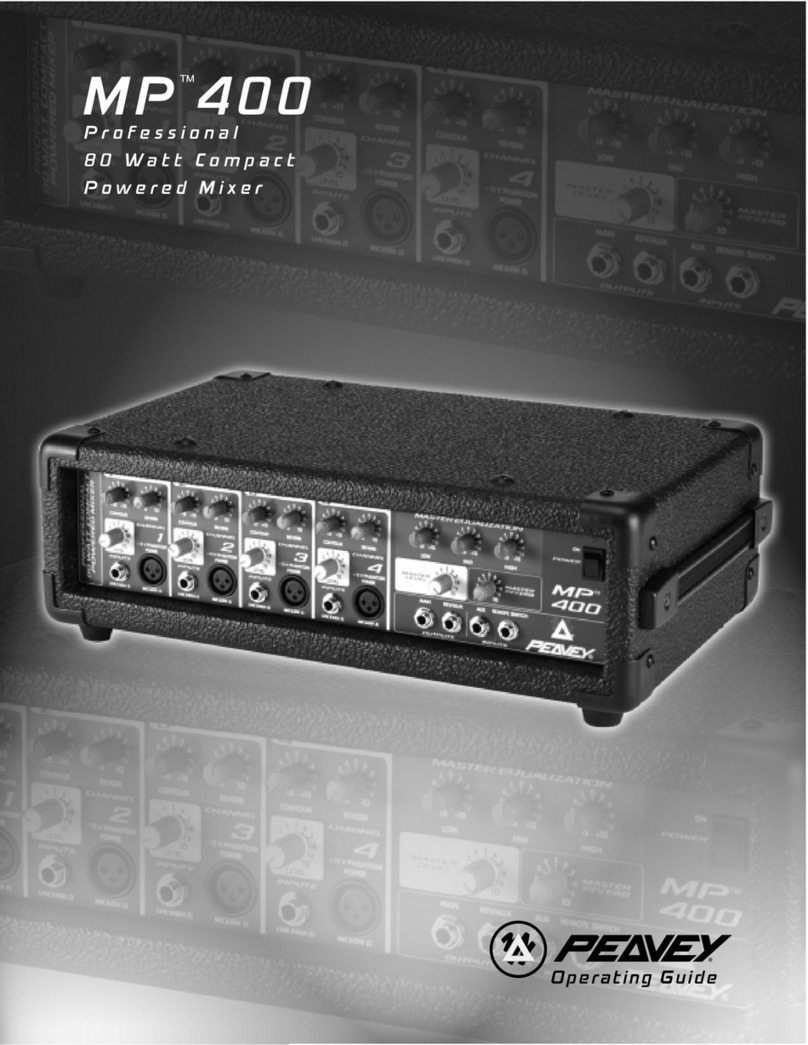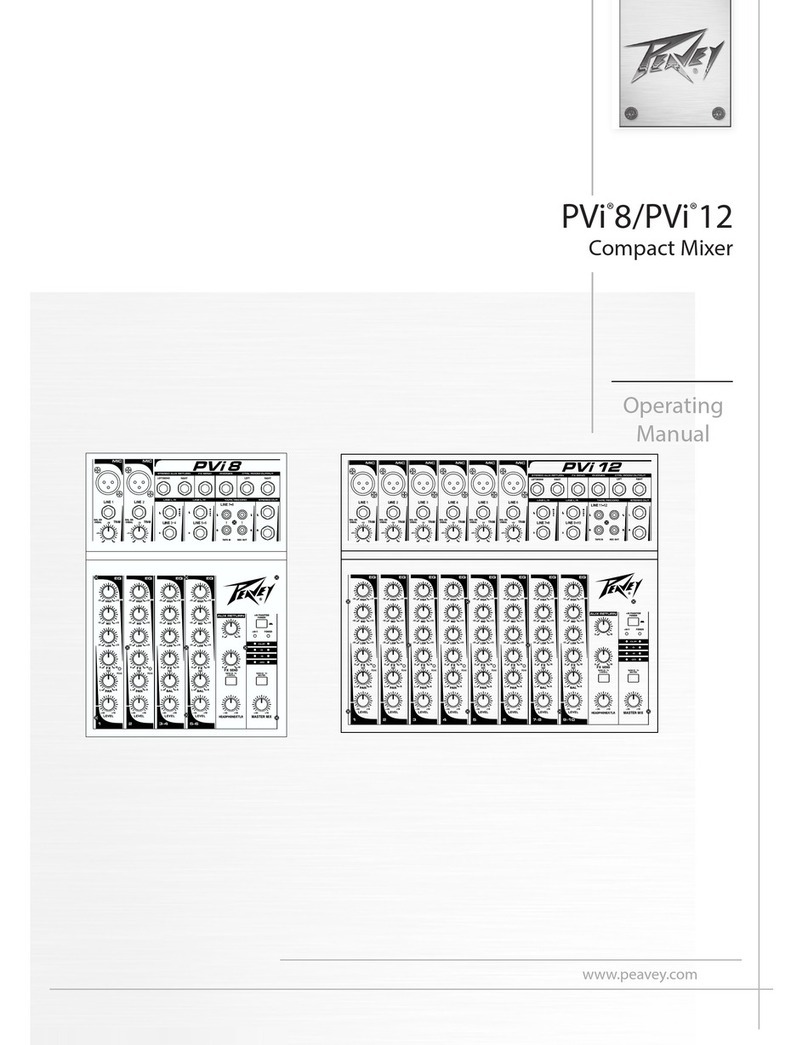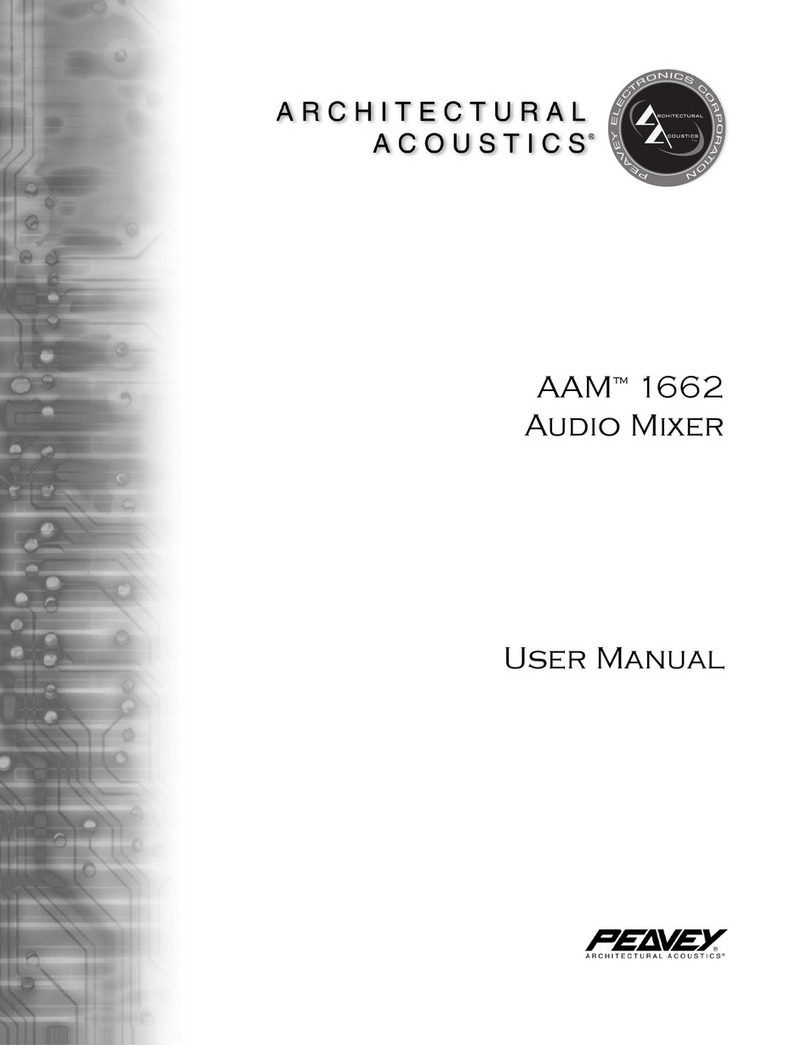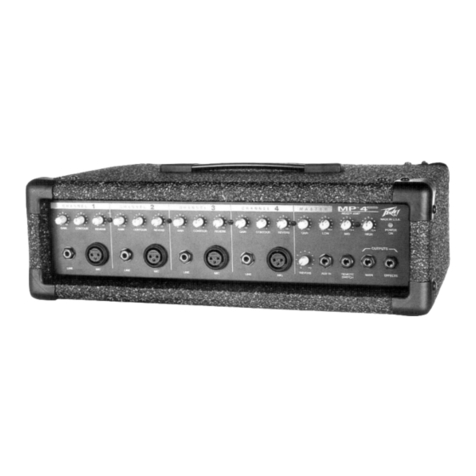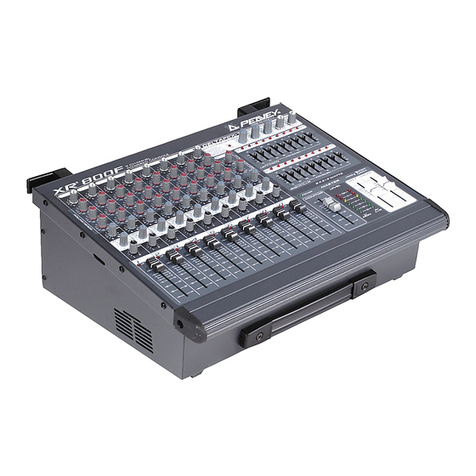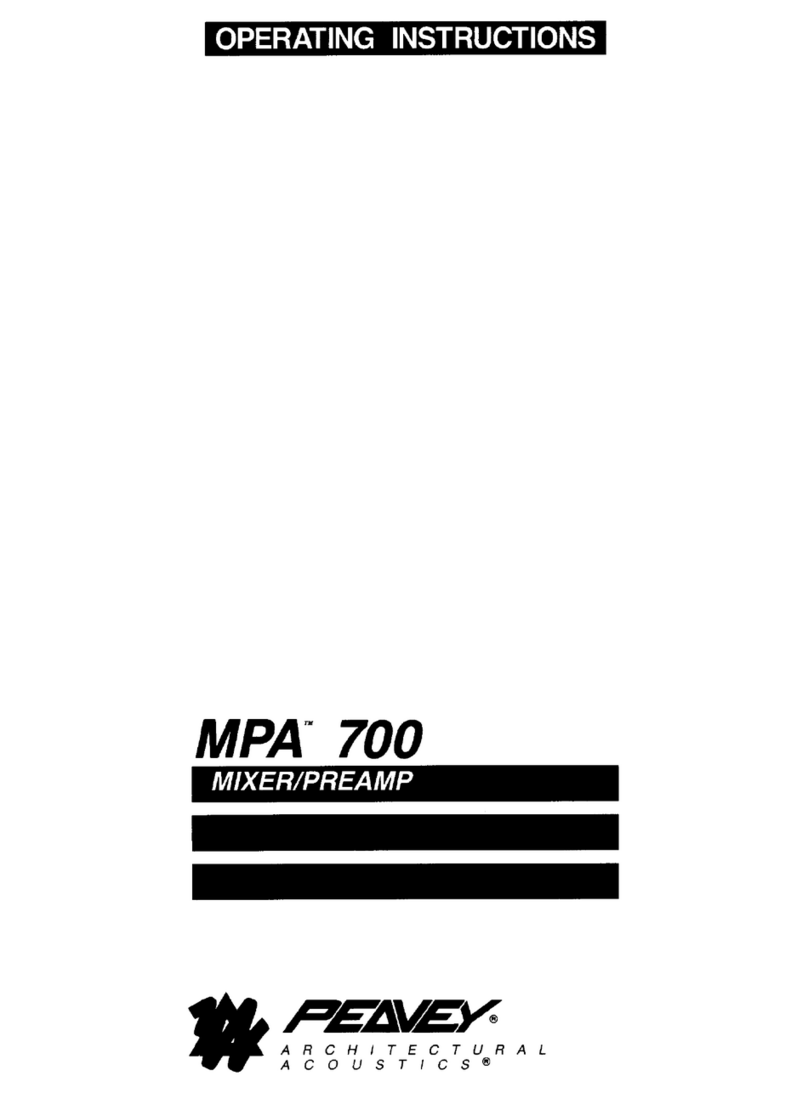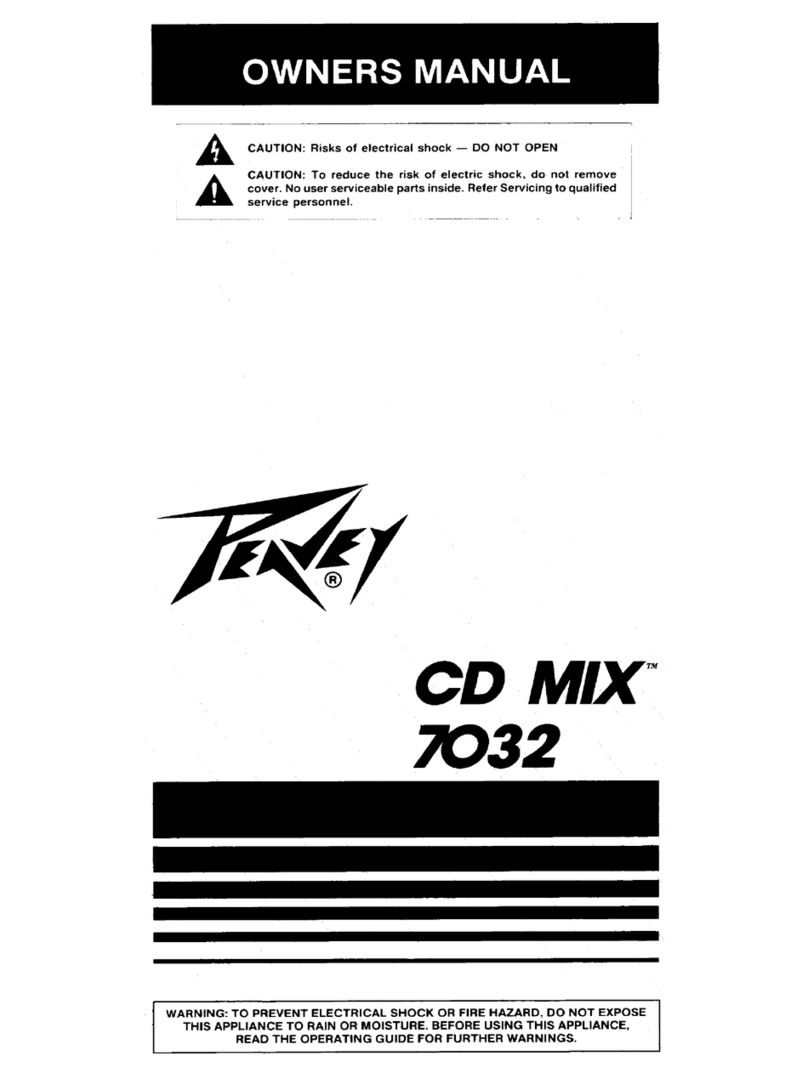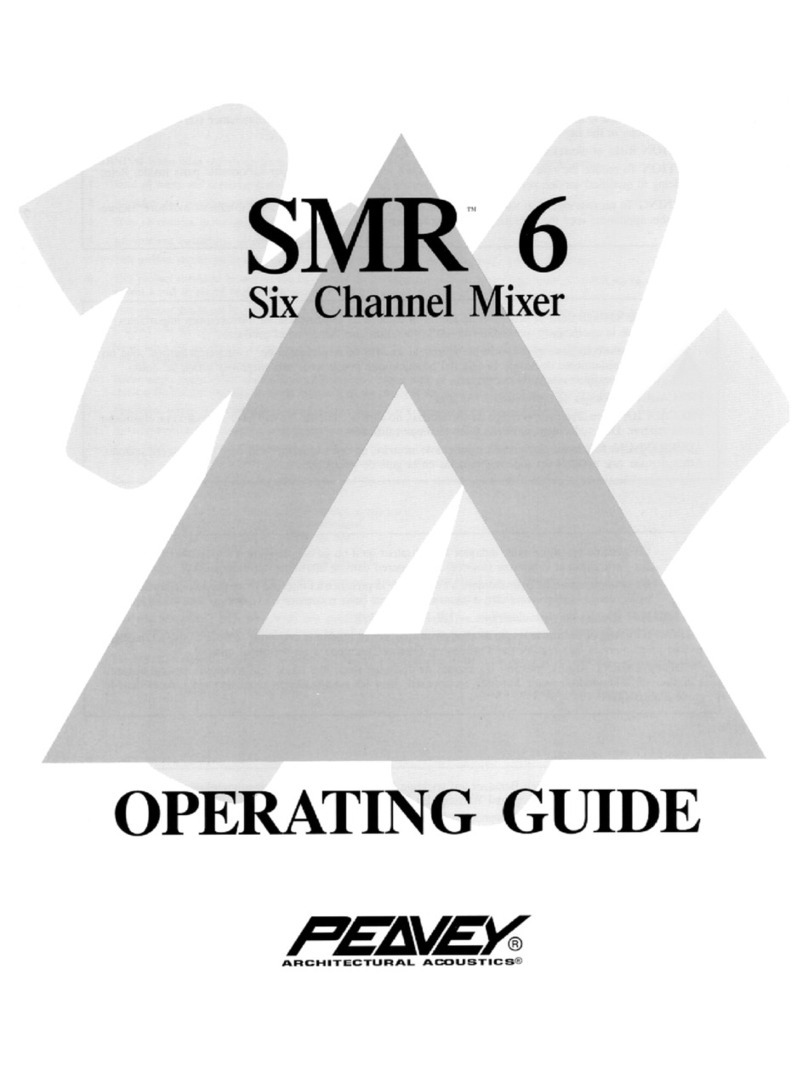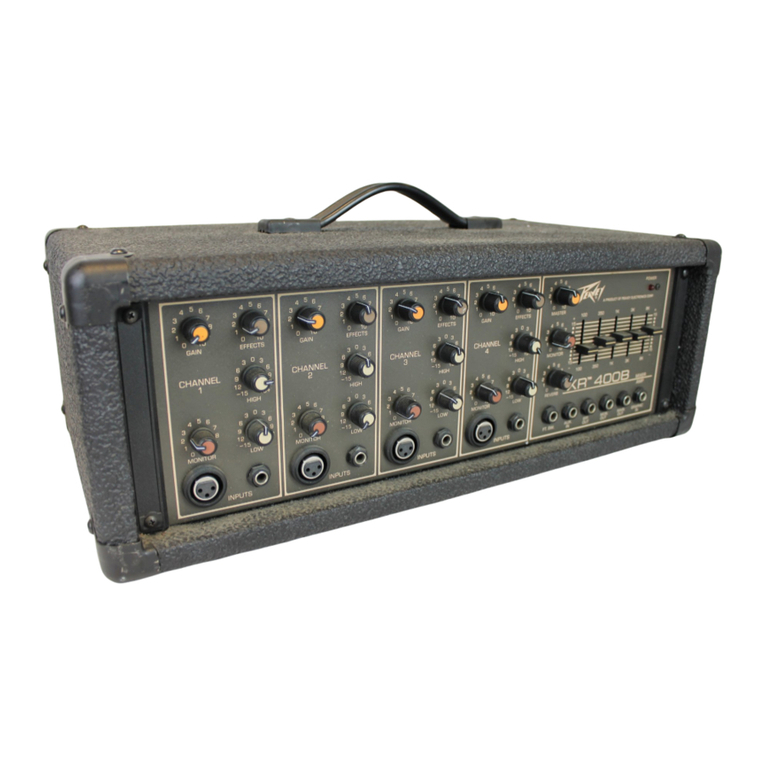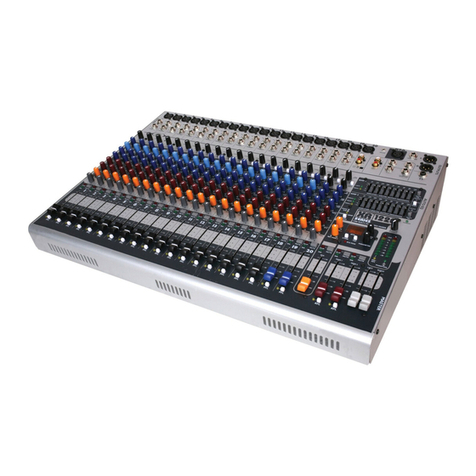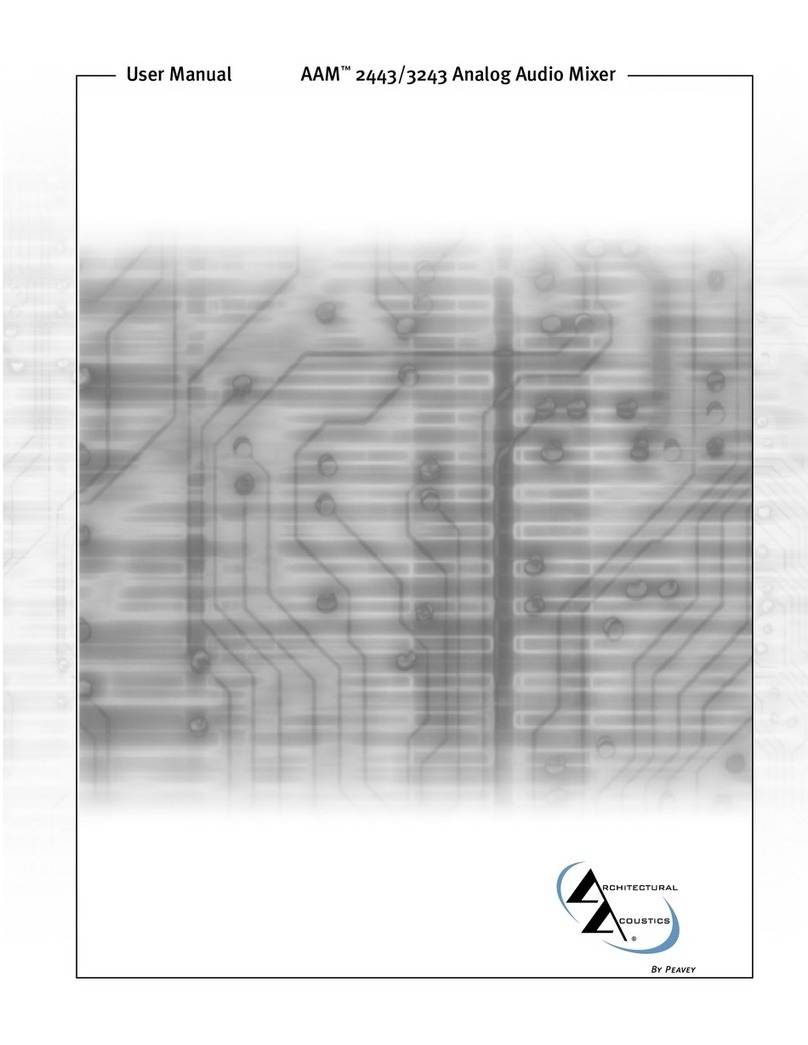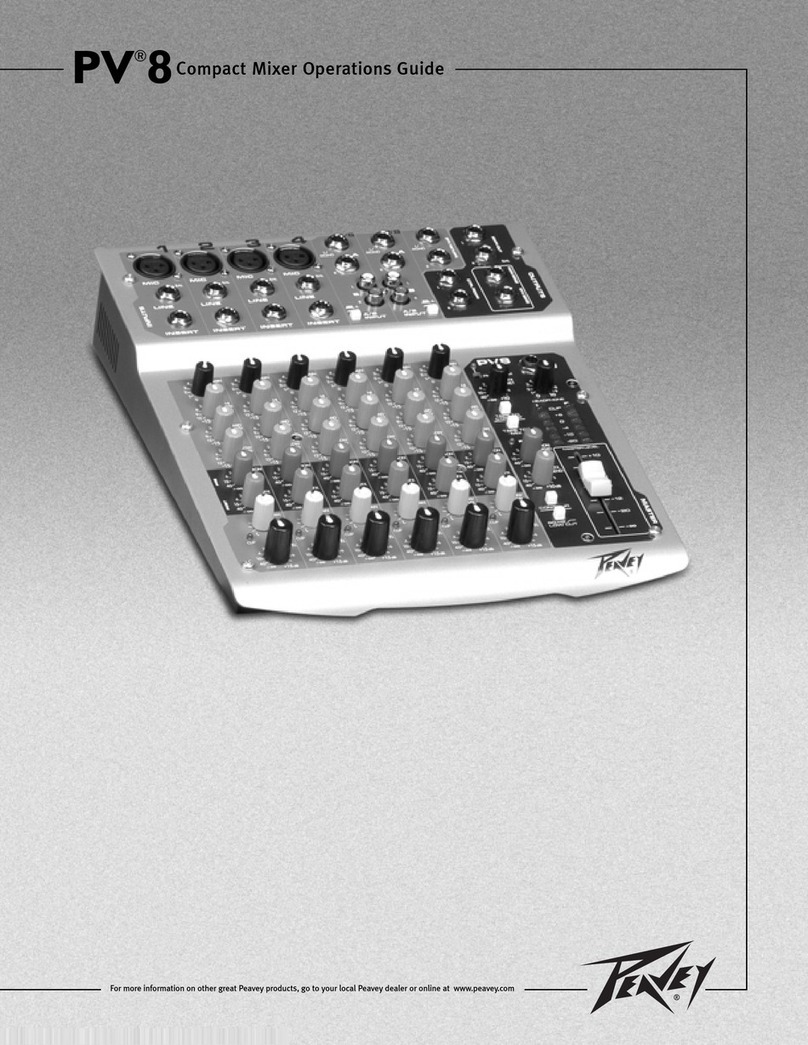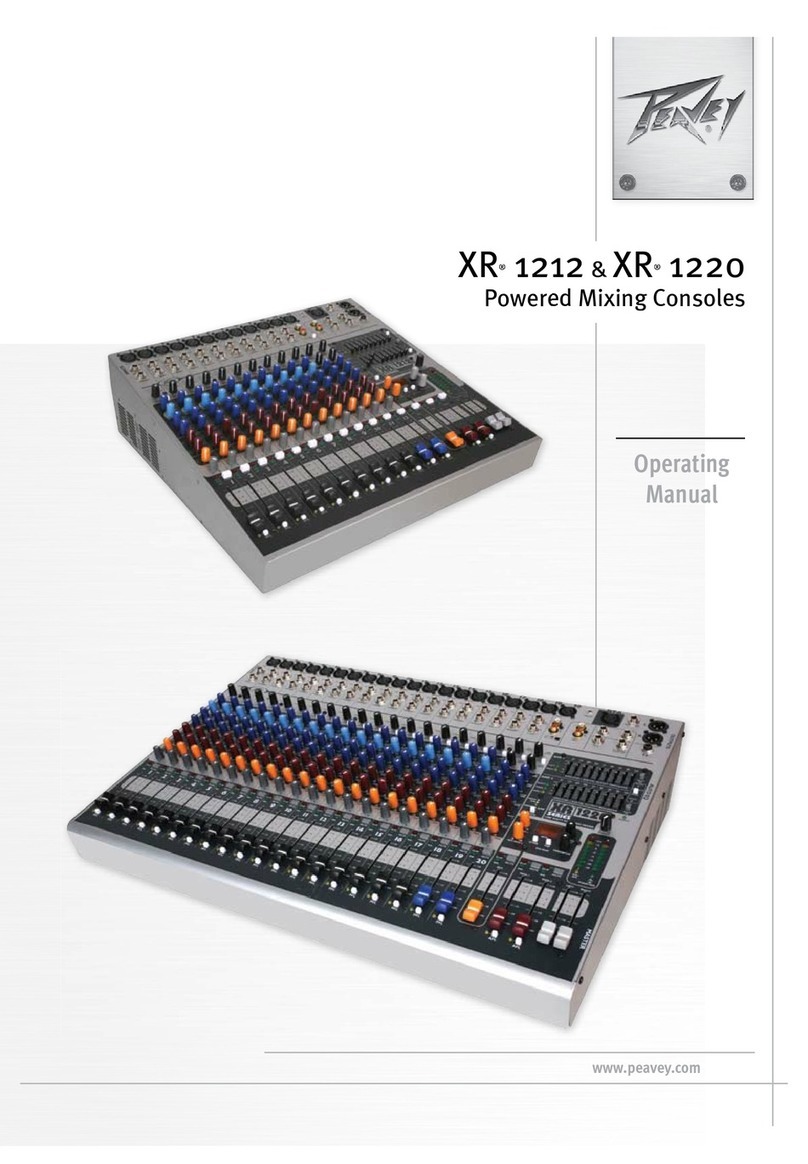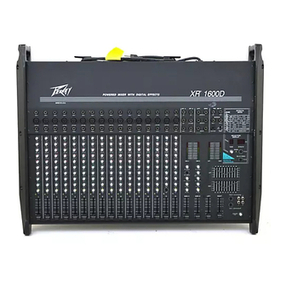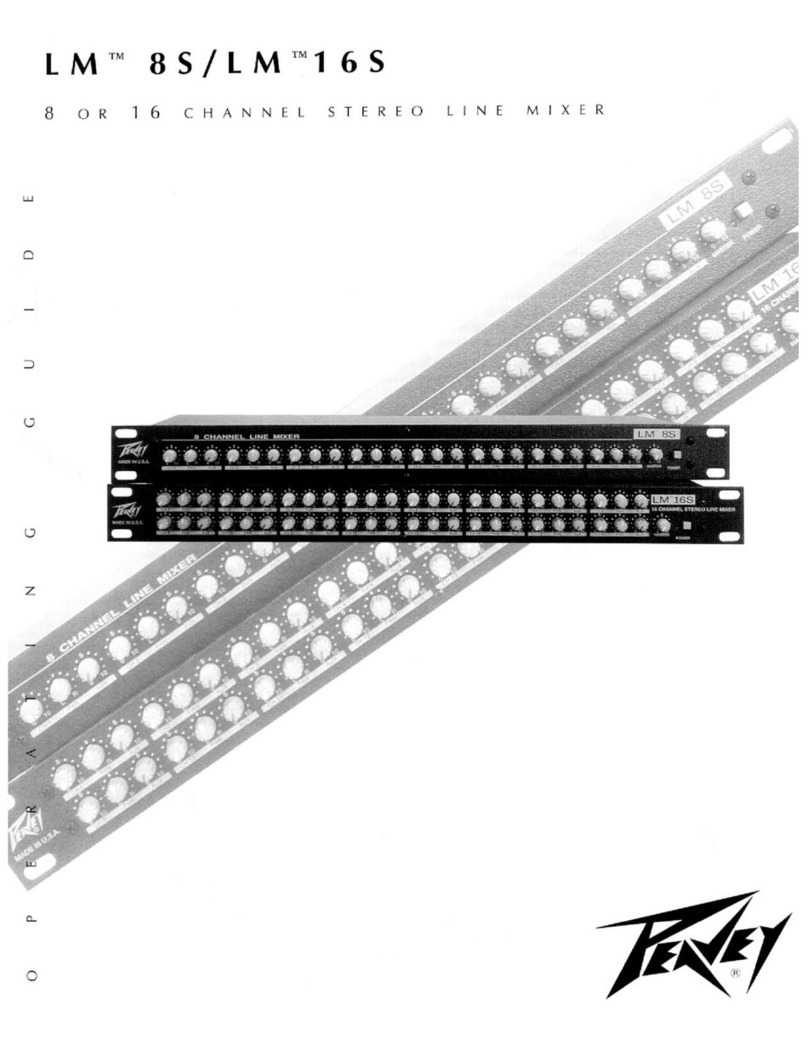5. 40 Hz Rumble Switch
The Rumble Switch inserts a low cut filter at the main outputs, rolling the signal off at 40 Hz. Use this switch
to eliminate turntable rumble and excessive low frequency energy. Using the rumble switch in this manner will
increase amplifier headroom.
6. Main TRS Balanced Outputs (L and R)
These 1/4" balanced stereo outputs are the preferred method of signal transfer from the 3D Mix ProÕs main
outputs to outboard equipment. The 1/4" connectors are Tip-Ring-Sleeve (TRS), where the tip is positive, the
ring is negative, and the sleeve is ground. Use these Left and Right connectors for optimum power amp noise
rejection. These outputs are also compatible with unbalanced (TS) inputs. The signals at this output are
controlled by the Main Level control (26).
7. Main RCA Unbalanced Outputs (L and R)
These RCA (phono) stereo outputs are unbalanced and should be used when the TRS Balanced Outputs are
not practical. You will achieve the same output signal here as with the TRS Balanced Outputs. The
connectors are gold-plated for maximum life and minimal contact resistance.
MONITOR OUTPUTS
8. Tape Outputs (L and R)
The Tape Outputs are duplicates of the RCA Unbalanced Outputs except -10 dB lower in level. They
offer a Left and Right output designed to feed a recording tape deck. These outputs also feature gold-
plated connectors and may be used as an additional output to external line level gear.
9. Booth Outputs (L and R)
These 1/4" unbalanced stereo outputs are used to feed the booth (or monitor) amplifiers. They have the same
signal as the headphones, but have their own level control. With the Headphone Select switch in the ÒNormalÓ
position, the signal determined by the Headphone Pan control (31) will be present. In the ÒSplitÓ mode, the left
signal will be a sum of the L+R cue signals and the right signal will be a sum of the L+R main signals. This
allows you to monitor the cue on the left and the main on the right. The Booth Output level is always
controlled by the master Booth Level control (28).
EFFECTS SEND/RETURN
10. Effects Loop (L and R)
Stereo 1/4" TRS jacks are provided for use with external effects units such as delays, reverbs, exciters, etc.
Both jacks (L and R) are wired so that the tip is the send and the ring is the return. Of course, the sleeve is a
common ground. The Effects Loop is post X-Fader, meaning that the X-fader controls what is being sent to
your effects. Signal is present at the Effects Loop sends at all times, so it can be cued but not applied to the
mains until the Loop Engage button (37) is pressed. (The indicator light will illuminate.) Effects can be
checked during a cue by pressing the Loop Cue switch (38).
INPUT CHANNELS 1 AND 2
The following section will cover information pertaining to the input channels. Since the
3D Mix Pro has two, identical, feature-packed channels, all descriptions in this section
pertain to both channels. For ease of explanation, this section is divided into two sub-
sections: INPUTS and CONTROLS/INDICATORS.
INPUTS
11. CD/Line Level Input
These gold-plated, stereo RCA jacks are provided for connection to external devices
such as a CD, Minidisc, or DAT player. DO NOT USE THIS CONNECTION AS AN
INPUT FOR TURNTABLES.
12. Phono/Line Level Input
This stereo input can be used for two types of equipment as determined by the
Phono/Line switch (13). With the switch in Phono position, this input will accept the
6
11
13
12
